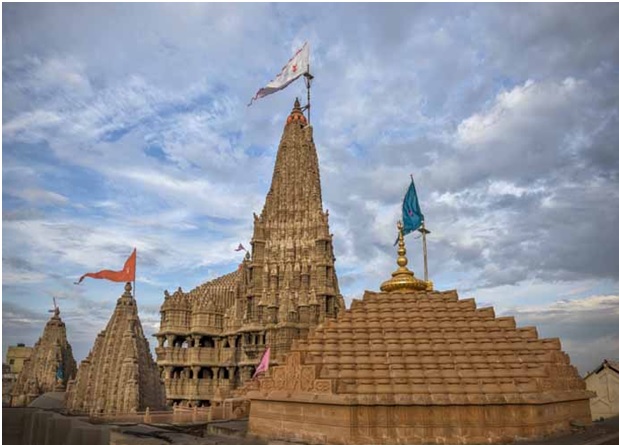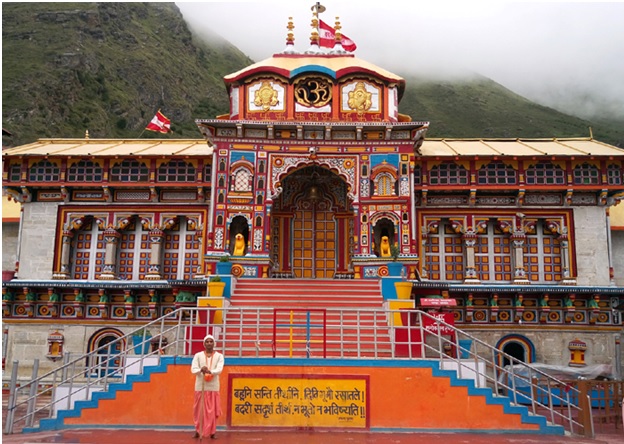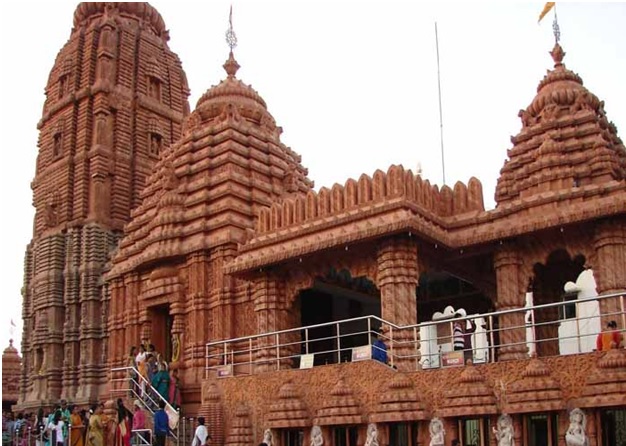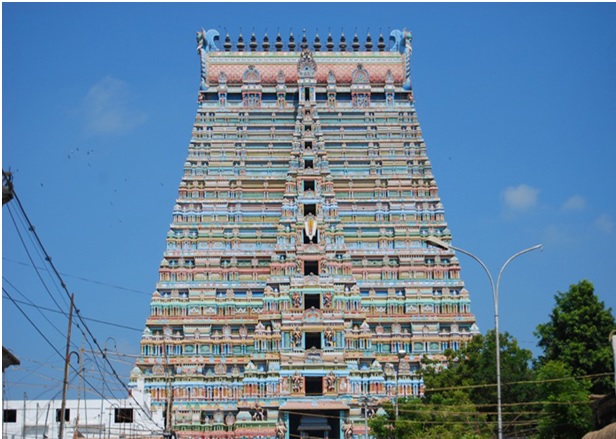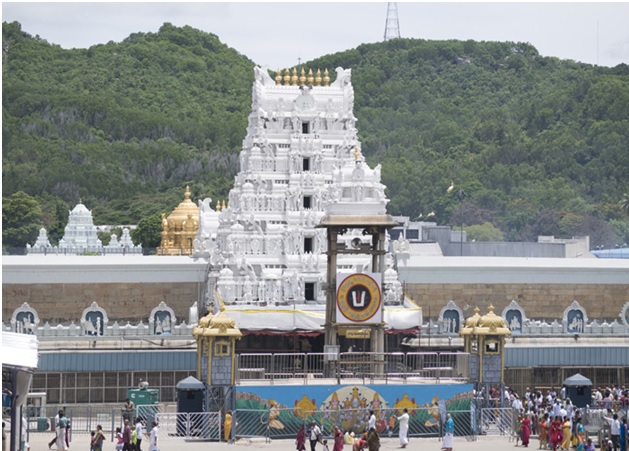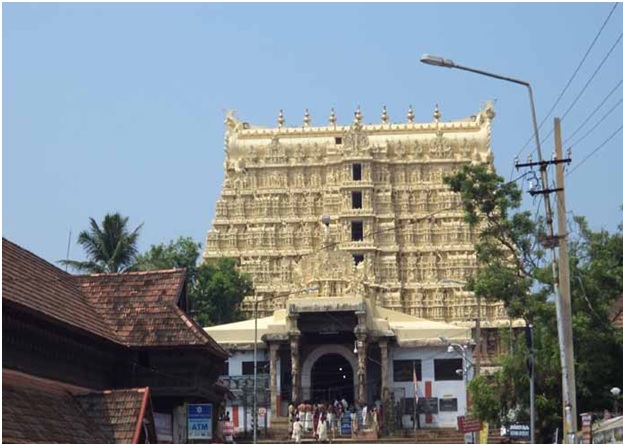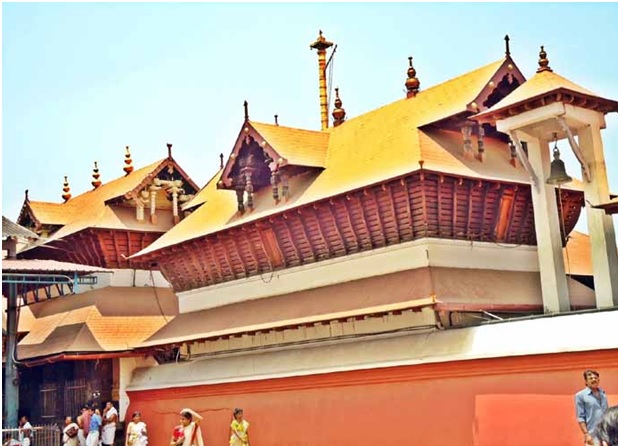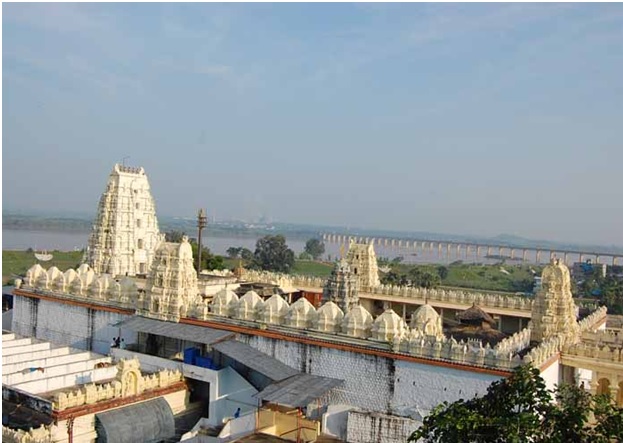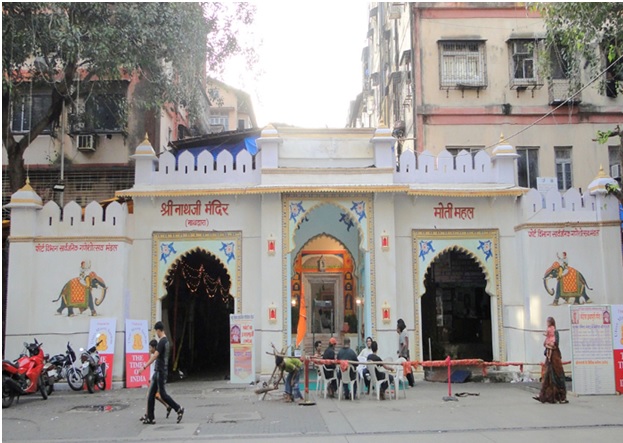No products in the cart.
Vishnu. The God in charge of maintenance and preservation of the physical universe. It is said that the dream or Maya of the entire corporeal universe is maintained by Lord Vishnu’s dream of the same. The Lord who dreams the entirety of cosmos into being also interferes in its intricate details by taking physical forms to uphold the dharma whensoever it is necessitate, as outlined in the verses of Gita wherein his purna avatar (Whole incarnation) Krishna declares to Arjuna,
“yada yada hi dharmasya glanir bhavati bharata abhyutthanam adharmasya tadatmanam srjamy aham”
Wheresoever, whensoever adharma (unrighteousness) tends to take over the affairs of the world, I would take physical form to uphold dharma (righteousness) in the world.
As can be seen from the importance of Lord Vishnu in the nitty gritty details of the affairs of our physical universe, it comes as no surprise that a plethora of temples dedicated to Lord Vishnu adorn Indian landscape. Short listing a few among them as ‘major’ is always difficult, but for the sake of practical purposes let us choose to undertake the same by evoking Lord Narayan’s blessings that his grace does truly lead us in this endeavor. Here’s a list of 10 Most Popular Vishnu temples in India.
Badrinath Temple, Uttarakhand
Foremost among the Vishnu Temples would be Badrinath Temple in Chamoli district of Uttarakhand. It is not we who say so, but Skanda Purana as per which its stature ranks the highest of all the temples in earth, heaven and netherworld. It is at Badrinath temple that both the Char Dham – all India Char Dham and Himalayan Char Dham culminate their pilgrimage trajectories. Since it is widely believed that a visit to Badrinath is incomplete before visiting Kedarnath beforehand, Badrinath Kedarnath Yatra is another important pilgrimage Hindus embark upon at least once in their lifetime.
The temple’s idol is said to have been discovered and enshrined by Adi Shankaracharya in the eighth century from the waters of Alaknanda River upon whose banks the temple is presently situated. While the holiness attributed to the land goes back to Puranic times, of its having served as the sacred ground of Tapasya for Nar-Narayan and even Vishnu himself sheltered by Lakshmi Devi as Badri tree.
Badrinath Temple is open for Darshan only half a year- the summer months of May – October owing to its location in the wintry land of Gharwal Himalayas.
Jagannath Temple, Orissa
The Rath Yatra of Jagannath Temple is famous throughout India. In this chariot festival, the triad of idols – Lord Krishna along with his siblings Balarama and Subhadra are carried in procession from the temple till Gundicha Temple located about 3 km away from the temple. The magnificent chariots of dimensions 45 feet in height and 35 feet square in area are the creative work of myriads of painters, artists and craftsmen for over two months. Hundreds of devotees pull the elaborately ornate chariots in its annual Rath Yatra festival.
Jagannath Temple is the first to be visited in the Char Dham Yatra decided by Adi Shankaracharya, following the rules of parikrama to move from east towards west in clockwise direction- Jagannath Temple, Ramanathaswamy Temple, Dwarkadhish Temple and Badrinath Temple.
The temple has served as spiritual abode for many renowned saints like Ramanuja, Ramananda, Adi Shankaracharya and Chaitanya Mahaprabhu.
Ranganathaswamy Temple, Tamil Nadu
The majestic Sri Ranganathaswamy Temple, spanning across a whopping 156 acres, is undoubtedly the largest functioning Hindu temple in the entire world. Of the 108 Divya Deshams exemplified by Alvars, Tamil saint poets between 5th century – 10th century BCE, Srirangam is considered to be the first and most important. The enormously large temple structure is constructed over an island formed by rivers Kavery and Coleroon. Its idol is said to have been one of the rare self-manifested forms of Vishnu. Having played its key role in Vaishnavite tradition by being the spiritual home of the likes of Ramanuja, the temple has as rich historical and legendary treasures in its repository as one would expect of a temple of this magnitude in size and splendor.
Venkateswara Temple, Tirumala
The landmark Venkateswara Temple located in Tirumala, Chittor district is said to be the site of Kaliyuga Vaikuntham. Temple mythology has it that Lord Venkateswara has incarnated upon the ascribed site to save humanity from the trials and tribulations of the difficult kali Yuga. The temple is considered to be the richest in terms of financial offerings received. Some of the other names devotees call Venkateswara includes Balaji, Srinivasa and Govinda. The location of the temple in the seventh peak of Seshachalam, a cluster of seven peaks, is said to emulate Vishnu’s reclining over the seven-headed Adisesha.
The temple built in traditional Dravidian architecture houses the deity of Venkateswara. The deity is in a standing position and faces the east direction. It is believed that the deity would remain in the place till the end of Kali Yuga.
Dwarkadhish Temple, Gujarat
The present Krishna Temple at Dwaraka, archaeologically credited to have been over 2000-2200 years old, is said to have been originally constructed by Sri Krishna’s son Vajranabha over what constituted the residential palace of Shri Krishna himself. Sri Krishna, the eighth and most revered of Vishnu’s dashavtar, is said to have reigned over the kingdom of Dwaraka in the Dwapara Yuga. The enlargement and modification of the temple in Chalukya architectural style is attributed to 15th-16th century. The magnificently built five storied building has seventy two pillars.
Padmanabhaswamy Temple, Kerala
The name Thiruvananthapuram, the capital city of Kerala, translates as the city of Lord Anantha after the very Padmanabhaswamy Temple situated within its contours. The deity is venerated as the familial guardian deity of Travancore royal family. The temple architecture is a beautiful fusion of indigenous Kerala and Tamil styles. The major deity of the temple is Lord Vishnu reclining in his yogic sleep posture of Anantha Shayanam upon the serpent of Adisheshan.
Guruvayoor Temple, Kerala
The four armed form of Lord Vishnu worshipped in Guruvayoor is called as Guruvayoorappan. Guruvayoor temple is considered chief among the Vishnu temples in the state as well as the entire nation. This ‘Dwaraka of south India’ is also affectionately called as ‘bhuloka vaikuntha’, the holy home of Vishnu upon earth. The legendary history of the temple is filled with myriad tales of miracles associated with devout heart who worship at the sacred shrine.
Equally noteworthy as the temple is its elephant yard (anakotta) of Punnathur Kotta which is home to over 56 elephants. The elephants, most of which are donated to the temple by the devotees, are worshipped as embodiments of Lord Guruvayurappan.
The inner sanctum of the temple depicts Lord Padmanabha in a reclining position with his right hand upon a Shiv Linga. Sri Devi Lakshmi and Bhudevi are worshipped alongside Vishnu as his consorts. From the navel of Lord Brahma, emerges Brahma, the creator of the Universe.
Aswaklanta Temple, Guwahati
This famous temple located on the banks of the beautiful Brahmaputra River was built in 1720 AD, by King Shiva Singha. Aswaklanta translates to tired horses. There is an interesting legend behind such a name. It is said that this is the site at which the fatigued horses of Shri Krishna took rest at while he was moving in search of Narakasura. The temple underwent massive destruction in the year 1897 due to an earthquake. The credit for its renovation is attributed to Lord Curzon, the then Viceroy of the place. Of the two idols worshipped in the temple, one is of Janardhana Lord and the other is Anantasai Vishnu. It is said that the beautifully intricate second idol dates back to eleventh century. The temple and its surrounding environ is also a much cherished tourist site, especially for the mesmerizing sunset views offered by Brahmaputra river.
Ramanathaswamy Temple, Bhadrachalam
Probably the most famous of Sri Rama temples in India, the Badrachalam Temple is a beautiful shrine adorning the serene banks of Godavari River. The area is also referred to as Dakshina Ayodhya, Ayodhya of South. The principal idol in the temple is that of Vaikuntha Rama, Rama’s form with four arms. This is attributed to the legend surrounding its conception where Lord Rama granted Darshan to Bhadra in the same form, forgetting that his incarnation as Rama was that of a ‘mere’ human being. The other deities worshipped in the temple are Sita and Lakshman. The moorti is said to have been self-manifested.
Shrinathji Temple, Nathdwara, Rajasthan
The Srinathji temple, located in Nathdwara along the banks of Banas River, worships Lord Krishna in the form of seven year old infant. Originally the deity was that of Jatipura Mathura and was transferred to the present site in the year 1672. The temple is intricately linked to Vallabhacharya, the Bhakt philosopher of medieval India who founded the Pusht sect in Vaishnavism. The artistry associated with the temple is called Pichwai paintings that depict Lord Krishna in the beautiful scenes of raas Lila. Many artists working on Pichwai Paintings can be found in the surrounding environ of the Nathdwara Temple.

